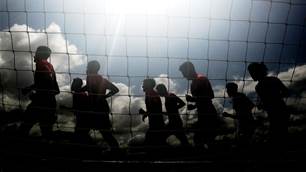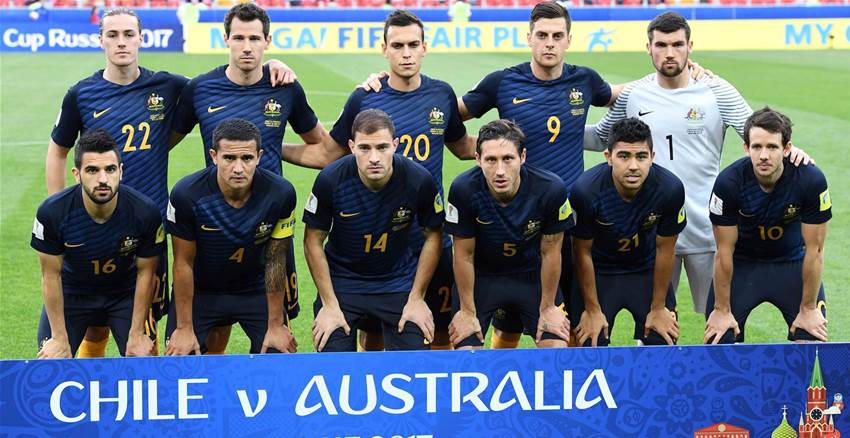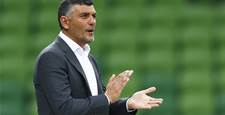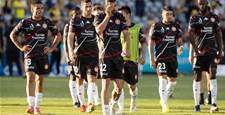A dominant performance from Australia against world number four Chile was not quite enough to progress to the semi-finals of the 2017 Confederations Cup, with a number of missed chances culminating in a 1-1 draw.
Ange Postecoglou described himself as shattered post-game, and maybe rightly so – had the Socceroos been more clinical in front of goal, it is quite possible that they would have won by the two-goal margin required and earned passage through to the next round.
PIC SPECIAL: Australia v Chile
Formations
Ange Postecoglou named a starting XI which contained six changes from the match against Cameroon, with both Tom Rogic and Aaron Mooy dropping to the bench.
Jackson Irvine, who played a tremendous role throughout, started in a deeper midfield role alongside Massimo Luongo, whilst captain Tim Cahill and James Troisi occupied the more advanced central positions.
Turkey-based Aziz Behich regained his spot in the starting XI from Alex Gersbach, starting on the left, with Robbie Kruse on the opposite flank. Mark Milligan and Ryan McGowan both came into the back three, either side of the ever-present Trent Sainsbury.

Juan Antonio Pizzi’s star-studded line up was led by captain Claudio Bravo, whose future at Manchester City is in doubt after Guardiola’s recent acquisition of former Benfica goalkeeper Ederson.
Mauricio Isla, one of the most capped players in the squad with 93 appearances for his country, started on the right-hand side of defence alongside 22 year-old Paulo Diaz. The Germany-based duo of Bayern Munich’s Arturo Vidal and Leverkusen’s Charles Aranguiz started in midfield, with Arsenal star Alexis Sanchez starting on the left.
PIC SPECIAL: Australia v Chile
Australia’s playing out from the back
In what was a determined performance from Australia against a world-class Chile side, Postecoglou stuck to his well-established philosophy and instructed his team to attempt to play through the lines.
Against opposition characterised by the ferocity of their high press, this in itself was a bold move and signalled the Australian intent to not just get a result, but to play well at the same time. A by-product of the system controversially applied by Postecoglou is the box midfield which it allows, combining two deeper and two more advanced central players.
The two deeper players, Jackson Irvine and Massimo Luongo, both played integral parts in the ability of the Socceroos’ to circumvent the Chilean press by moving behind the first line of pressure, as shown below.

The positioning between the lines allowed for the effectiveness of the press to be nullified; as a general rule, looking to be positioned on a different line of play to the opposition opens up the possibility to stretch the links between defenders, as they look to cover the vertical displacement of their positioning.
Having both Irvine and Luongo available presented further tactical opportunities, with Luongo in particular often dropping unchecked in front of the Chilean press to receive the ball at feet and change the angle of attack, at the same time increasing the space available to Jackson Irvine to move between the lines by vacating his original position.
The ability to play out from the back was central to the match strategy employed by the Socceroos, and almost paid dividends on several occasions with a high volume of chances created following sustained possession.
PIC SPECIAL: Australia v Chile
Intelligent and disruptive pressing
Chile are renowned throughout world football for their expansive, possession-hungry style of play.
For the first time in recent memory, La Roja were forced to go against this philosophy and employ more direct tactics. This was not due to the underperforming of their players, or a lack of technical ability, but simply down to the intelligent press designed by Ange Postecoglou and executed by his team.
The first, and most obvious element of the press was that the centre-backs were allowed to have the ball, giving the Socceroos the ability to maintain a compact defensive shape and minimise space between the lines.
On the contrary, pressing the centre-backs opens up more space, and allows the opposition to play around you if the first line is unable to win the ball back – sitting off ensured that this did not happen.
In what could be described as somewhat of a medium-to-high block, Tomi Juric was given the task to screen Silva, Chile’s holding midfielder and a key figure during build-up play. This had an immediate and profound effect, as Chile found themselves unable to recycle possession in the same manner that they generally do.
In most cases, Silva is covered by an opposition midfielder, allowing a spare man to drop from a higher position and act as the midfield fulcrum in his place. However, as Juric was marking Silva, Cahill and Troisi were able to screen and cover any such movement, forcing Chile into long balls or turnovers in dangerous areas of the pitch.
Australia were essentially pressing with a front three for the first time since the change in system.

If the Chilean centre-backs were to approach the trigger line with the ball, it is at that moment when they would be pressed – if not, an overload could be created in midfield, allowing them to play out.
Irvine and Luongo, who sat ball-side in behind the first line of pressure, were able to fulfil two important duties defensively; the first, to intercept passes that penetrated the first line and contest for second balls, and the second to track the runs of Vidal and Aranguiz, who would often retreat in order to offer a supportive option.

Above, Australia’s pressing is shown to result in a long ball from Chile’s Diaz. It is important to note that every player has a specific role to play:
· Aziz Behich (left wing-back) is responsible for the marking of Chile’s right-back Isla, who was largely static throughout the match.
· James Troisi (left attacking midfielder) is responsible for pressing the Diaz, the right centre-back, and ensuring that forward passing line are cut off.
· Tomi Juric (centre forward) is responsible for cutting off the access to Francisco Silva.
· Tim Cahill (right attacking midfielder) is a mirror-image of Troisi, responsible for the opposite centre-back.
· Robbie Kruse (right wing-back) is responsible for tracking the movement of Eugenio Mena, covering his vertical movement to ensure he could not receive the ball or initiate an overload.
· Jackson Irvine and Massimo Luongo were primarily responsible for tracking the runs of their respective midfielders, but were also tasked with intercepting penetrative passes should Vidal or Aranguiz be in the cover shadow of one of the players in the first line of pressure.
This highly detailed defensive scheme yielded stunning results, directly leading to Australia’s opening goal and the abandonment of Chile’s notable playing style.
PIC SPECIAL: Australia v Chile
Chile’s reaction
After a frustrating first half, Chile came out of the dressing rooms with a completely different plan to what most have come to expect from them.
For the first time in recent memory, they cast aside their preference of playing out in favour of avoiding Australia’s successful pressing. This direct and effective manoeuvre was enabled by a change of formation in possession, with left-back Mena pushing up to act as the fourth player on Chile’s most advanced line, alongside Sanchez, Vargas and Rodriguez, who had come on for Fuenzalida at the interval.

As a by-product of this change, Mat Leckie was forced into covering his run, and becoming a right-back to form a back four. This led to the eventual unbalance of Australia’s press, allowing Arturo Vidal to move into the space vacated by Mena and create a 2v1 situation with the ball-carrying Jara against the now central Robbie Kruse.
This numerical superiority, a return to Chile’s more proactive approach, caused problems for the Socceroos later in the second half, and contributed to the swing in momentum within the same time period.

Conclusion
One of the greatest performances in the Postecoglou era unfortunately did not yield any concrete results for the Socceroos, but will undoubtedly be a confidence boost coming into crucial fixtures against Japan and Thailand, where Australia will look to ensure their place in Russia this time next year.
Chile survived a scare and where at one point one goal away from being eliminated, and were perhaps consider themselves lucky that Australia were unable to take the multitude of quality chances that came their way.
A semi-final against European champions Portugal awaits La Roja, who will be hopeful of a place in the subsequent final.
Related Articles
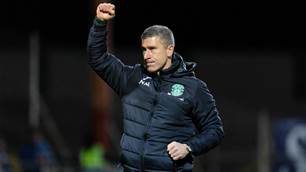
Champion A-League coach set to join Premier League giants
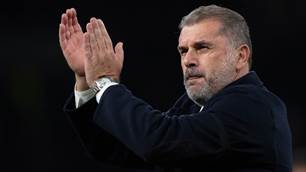
Under the gun: Spurs fans want Ange to be a loser in night of spite
